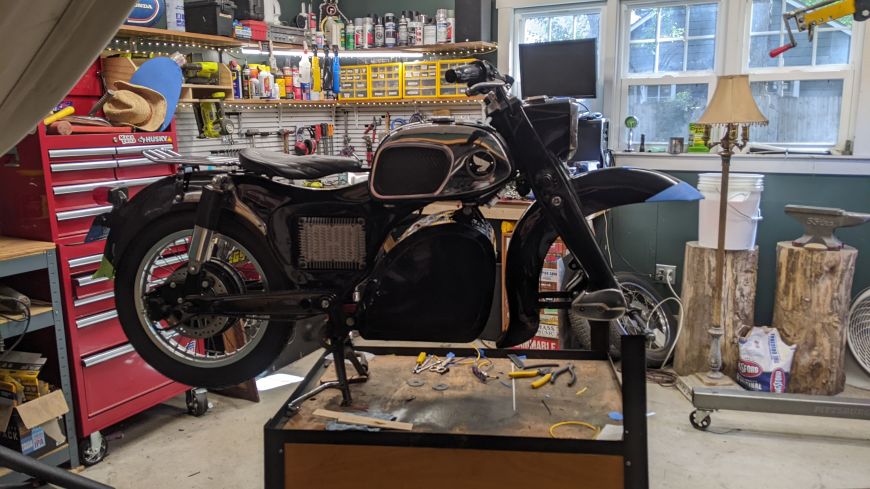mannydantyla
100 W
- Joined
- Dec 4, 2020
- Messages
- 126
Can anyone double check my wiring diagram?  (Plagarized from another build here on endless-sphere, but adjusted for my build and with a contactor with a 12v coil)
(Plagarized from another build here on endless-sphere, but adjusted for my build and with a contactor with a 12v coil)
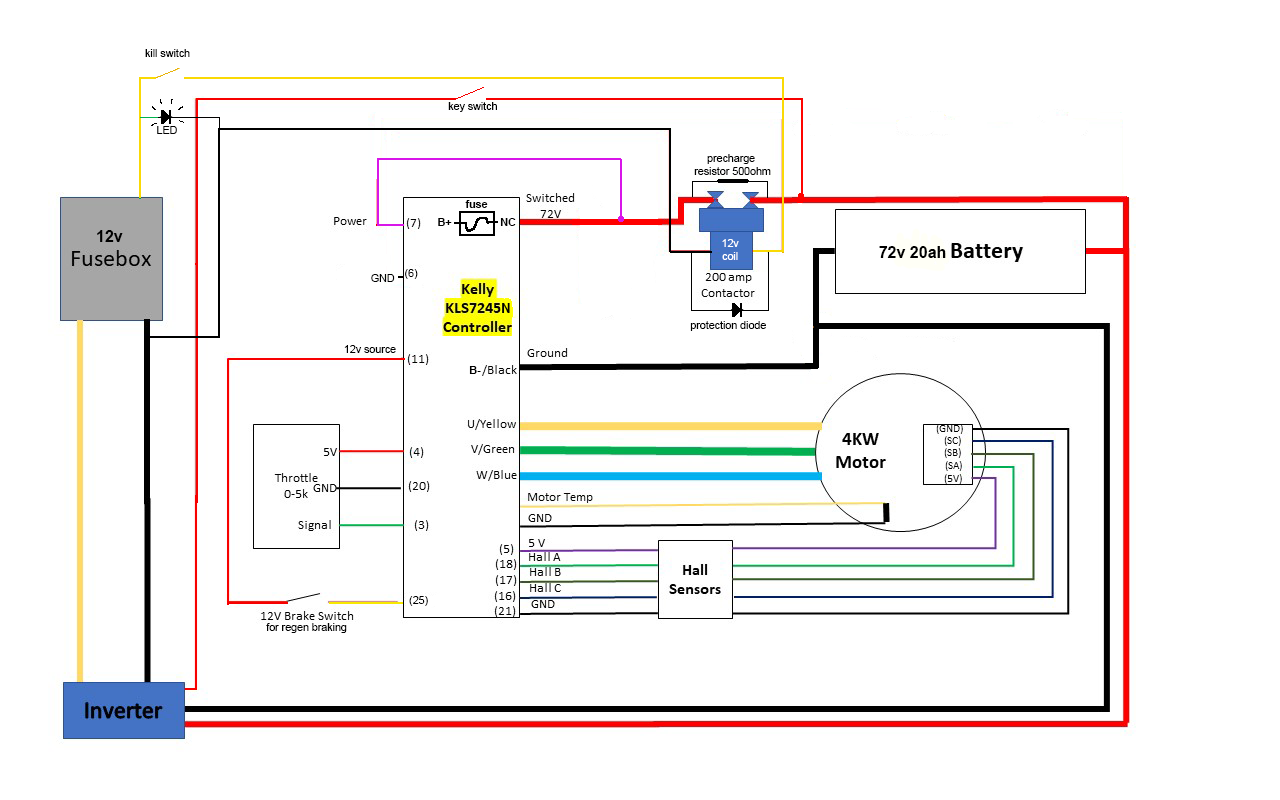


Elektrosherpa said:I dont see it...
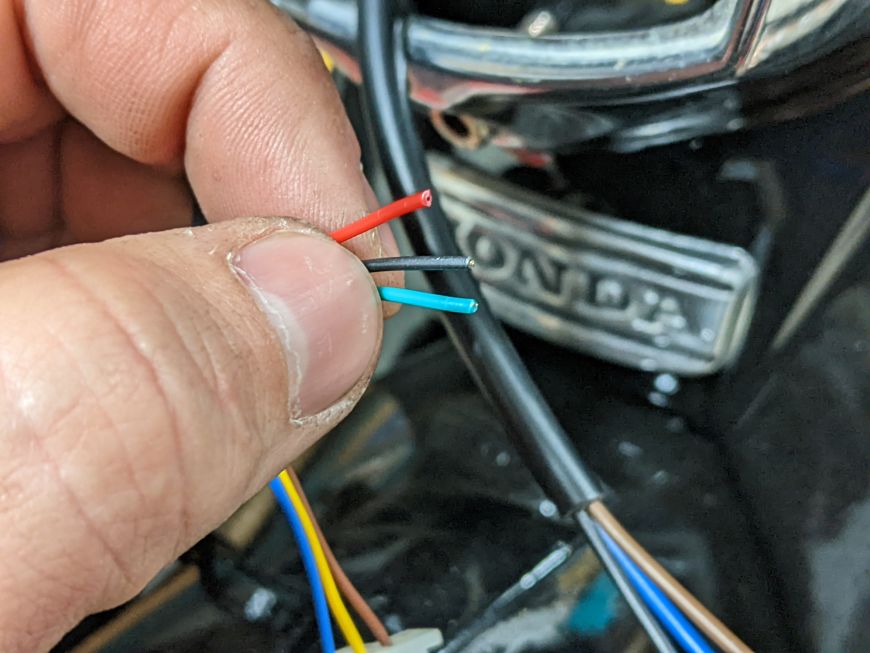
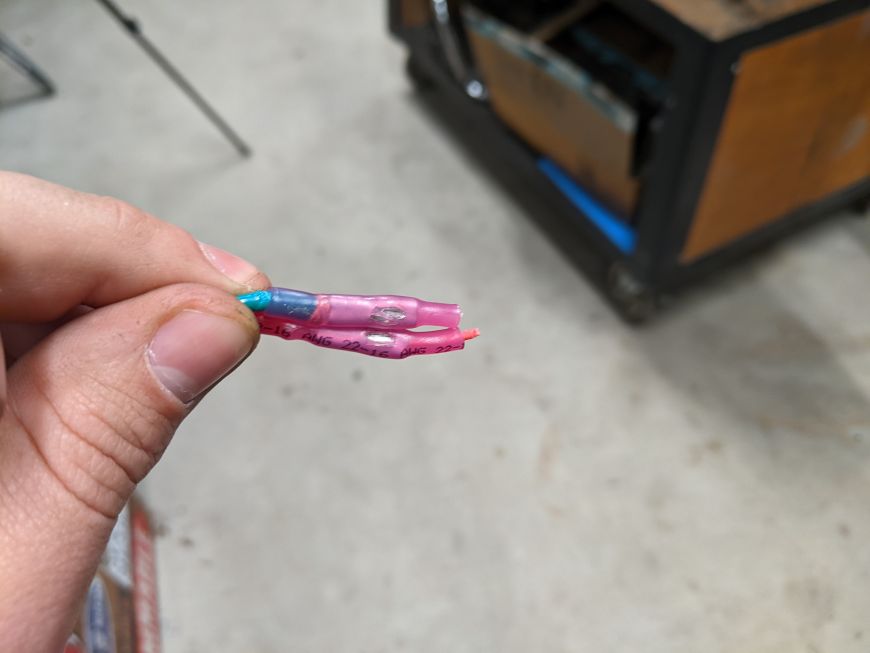
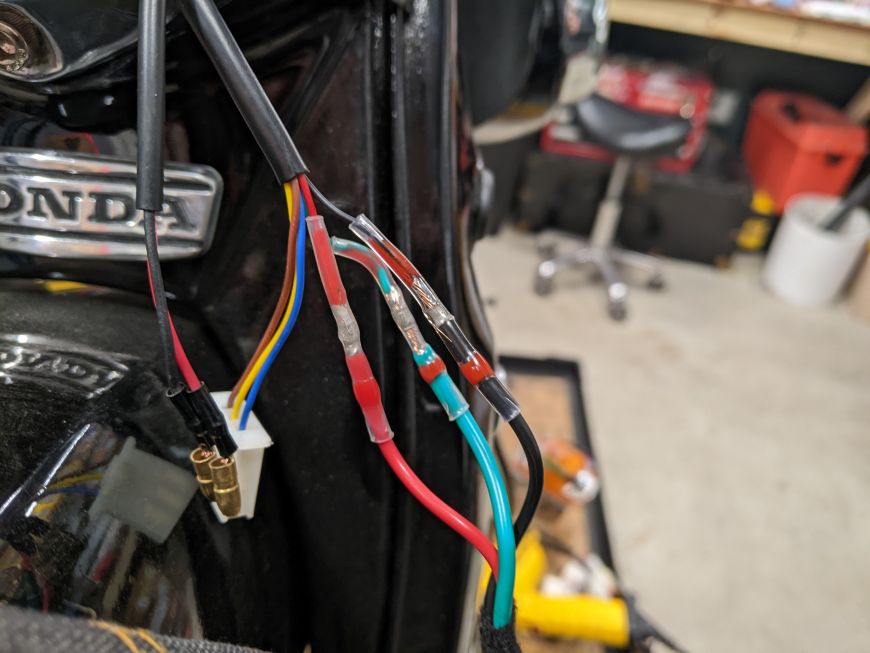
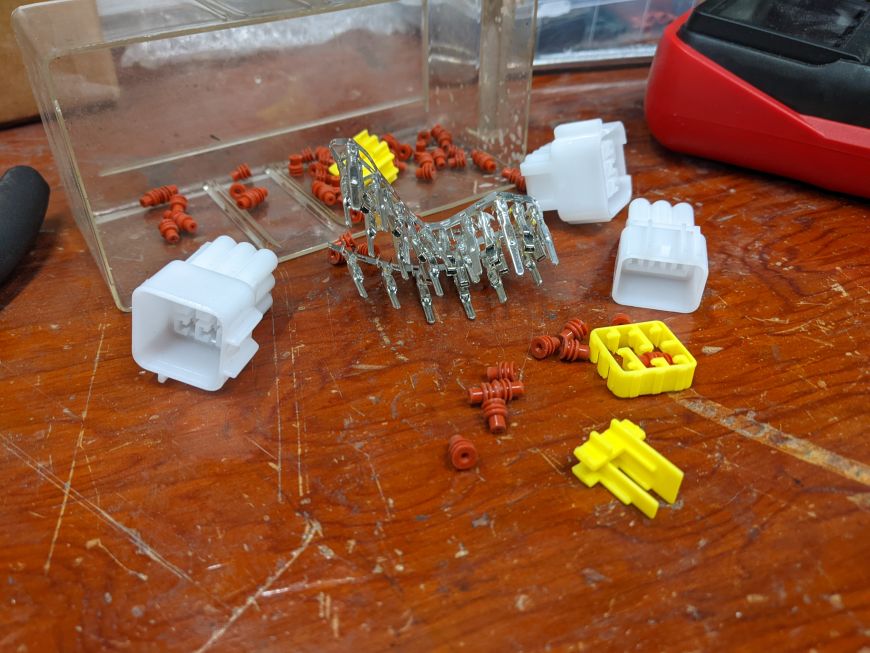
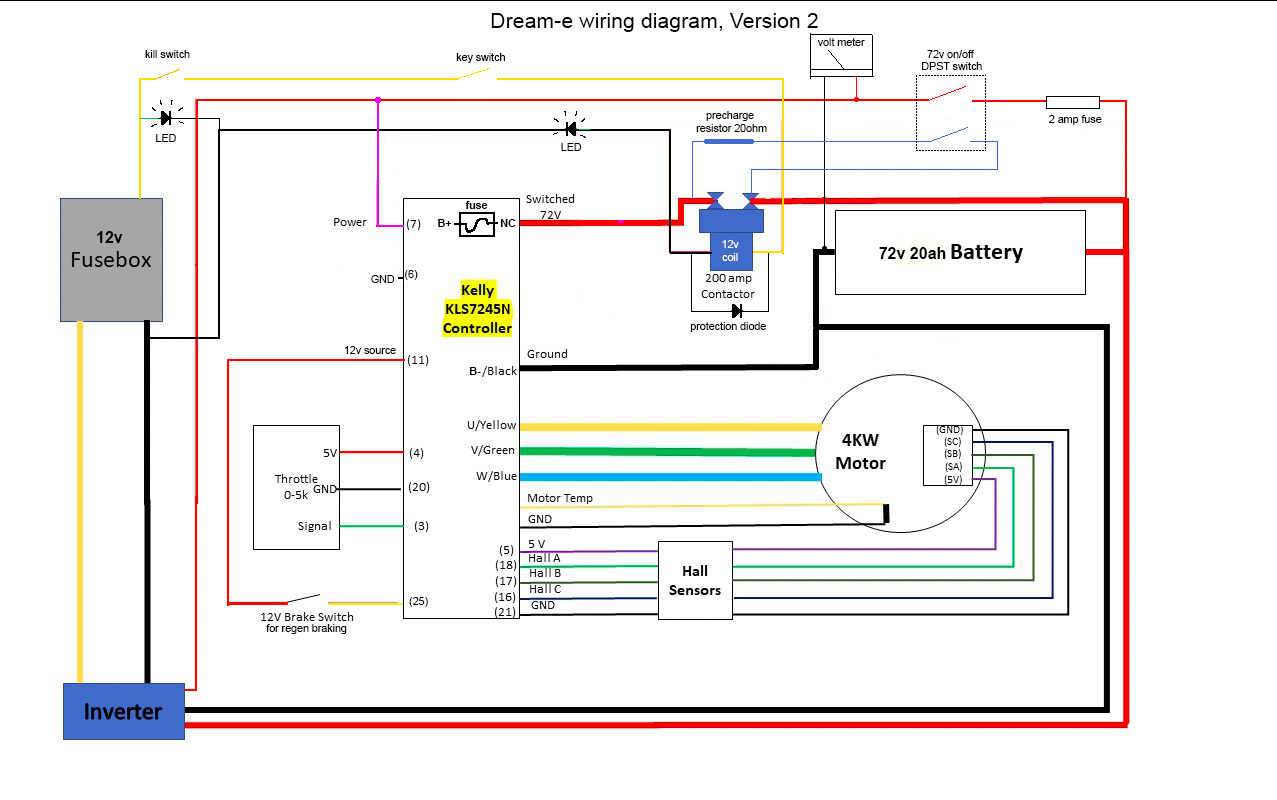
mannydantyla said:Alright I think I have fixed the problems in my first draft of the wiring. In addition to the drain via the precharge resistor, I had also mistakenly used my ignition switch (originally for a 6v bike) for the 72v low-current wire between the battery and the DC-to-DC converter.
Here's the 2nd draft. Please let me know if you see anything wrong, and is it OK to put an LED in series with the contactor coil wiring ?

mannydantyla said:Anybody know of a good way to balance a wheel with a hub motor? The hub motor makes the normal method not possible













